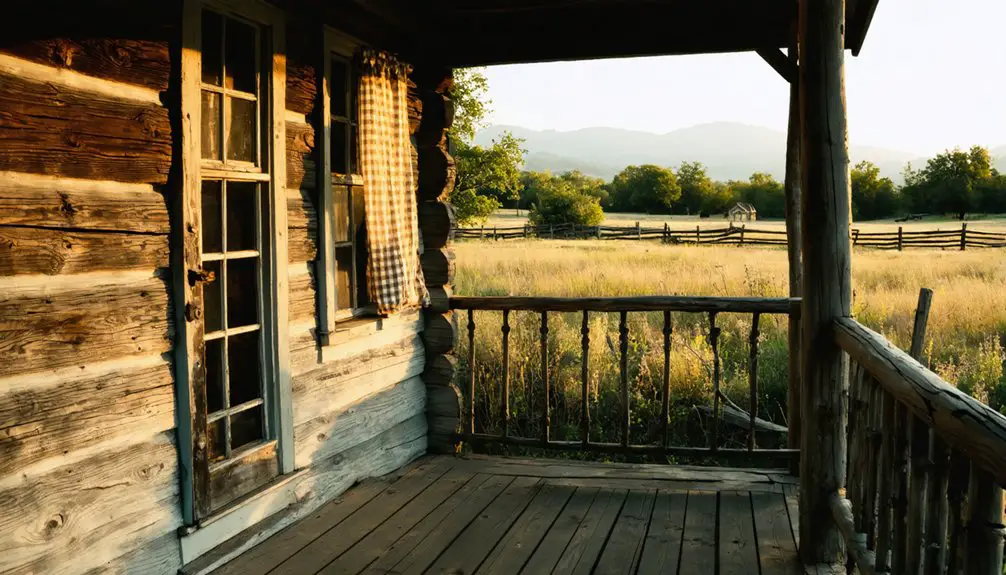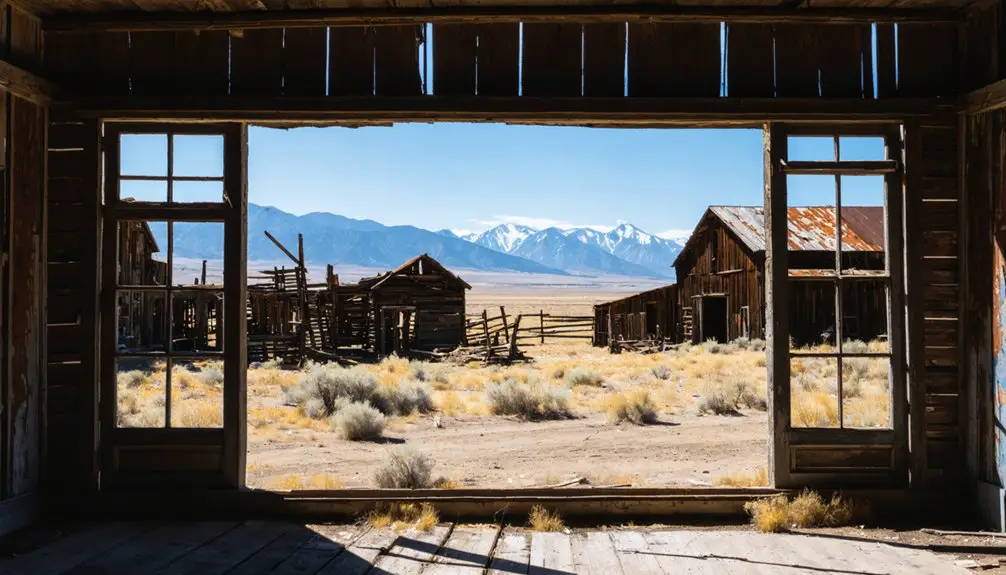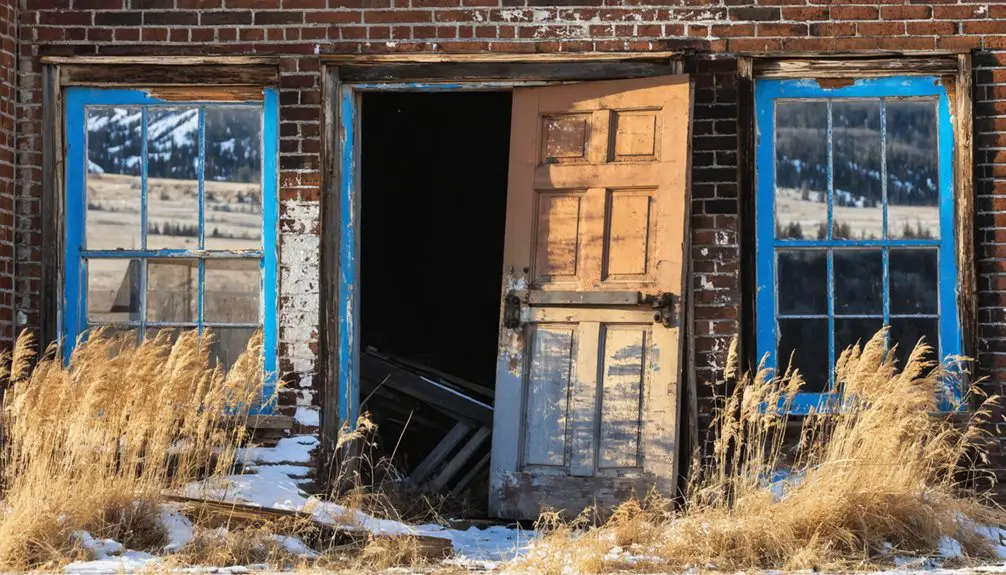You’ll find Sixteen nestled along Sixteen Mile Creek, where it emerged in 1895 as an essential Montana Railroad camp. The town’s significance grew with the Milwaukee Road’s expansion, featuring a post office and serving as an important stop for both ranchers and railroad crews. While it thrived during the railroad’s golden age from 1909 to the 1920s, Sixteen’s eventual abandonment in 1980 transformed it into one of Montana’s most distinctive ghost towns, with a story that echoes through its remaining structures.
Key Takeaways
- Sixteen originated in 1895 as a railroad base camp along Sixteen Mile Creek, serving the Montana Railroad’s expansion through the region.
- The town’s primary purpose was supporting railroad operations, making it unique among Western settlements focused typically on mining.
- During its peak, Sixteen thrived with the Milwaukee Road railway system, which dominated freight traffic in the Pacific Northwest.
- The community declined as railway operations modernized, leading to the post office’s closure in 1944 and railroad abandonment in 1980.
- Today, Sixteen stands as a ghost town, representing Montana’s transportation history and the boom-bust cycle of frontier settlements.
The Birth of a Railroad Town

As construction crews laid tracks through Montana’s rugged terrain in 1895, the town of Sixteen emerged as an essential base camp for the Montana Railroad‘s ambitious expansion project.
You’ll find its origins tied directly to Richard A. Harlow’s vision for connecting Montana’s remote regions, with railroad construction beginning at Lombard and pushing eastward through the challenging Sixteen Mile Canyon.
The town drew its name from Sixteen Mile Creek, which carved the narrow valley where workers established their outpost.
Unlike other Western settlements built around mining or farming, Sixteen’s purpose was singularly focused on supporting railroad operations.
While other frontier towns sprouted from mines and farms, Sixteen existed solely to serve the expanding railroad’s needs.
While a post office had opened in 1890, the town’s true birth came with the arrival of the construction crews, marking the beginning of its brief but crucial role in Montana’s railroad history.
Life Along Sixteen Mile Creek
While Montana’s harsh climate shaped daily routines, life along Sixteen Mile Creek centered around the rugged 69-mile waterway that carved through Broadwater, Gallatin, and Meagher counties.
You’d find local ranchers and homesteaders maintaining their independence in this remote valley, where the community dynamics revolved around agricultural pursuits and rural traditions.
The creek’s narrow canyon, with its forested slopes and rugged terrain, provided both challenges and opportunities for the hardy settlers who called this place home.
Much like the most isolated town of Glasgow, Montana, the area’s remoteness created a tight-knit community of resilient residents.
Even as the population dwindled, you could still witness the spirit of community through events like the annual “Rattlesnake Round-up.”
The creek’s waters sustained both the Milwaukee Road’s operations and the scattered ranches until the railroad’s closure in 1980 marked the end of an era.
Peak Years of the Milwaukee Road
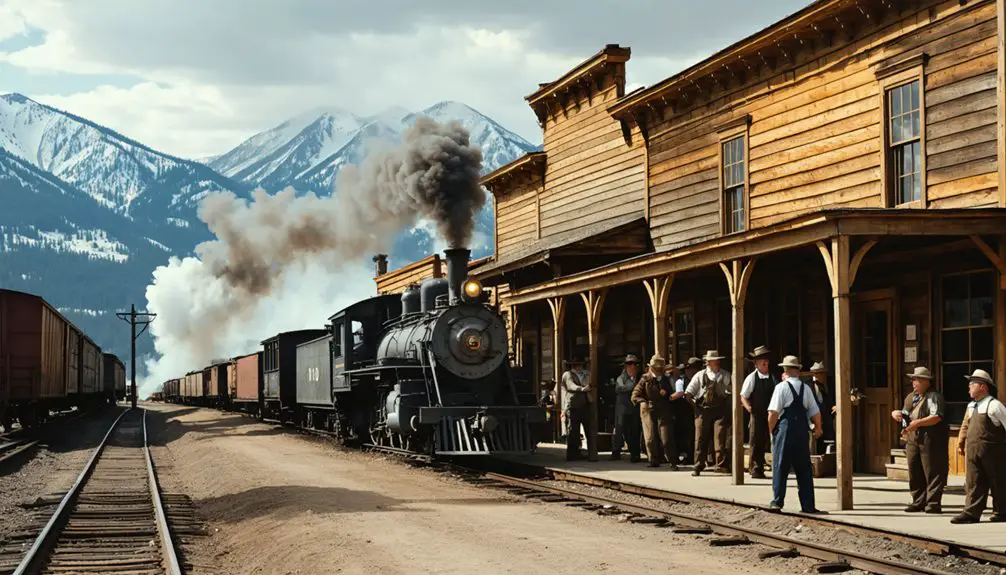
During its golden age from 1909 through the 1920s, the Milwaukee Road transformed Montana’s transportation landscape with its ambitious transcontinental route and groundbreaking electric operations.
Key Milwaukee milestones included establishing fast passenger service between Chicago and Seattle, and dominating Pacific Northwest freight traffic.
You’d have witnessed an engineering marvel as the railroad conquered Montana’s rugged terrain without land grants, building bridges and tunnels through the challenging Bitterroot Mountains.
The massive undertaking required sixteen tunnels to be constructed through the difficult Bitterroot Mountain range alone.
The Columbia River dams provided abundant cheap electricity that made electric train operations highly economical throughout the region.
The electrification effects were revolutionary – by 1920, the railroad had energized 645 miles of track, creating the world’s largest electric railway system.
This innovation solved the problem of steam engines losing power in Montana’s brutal -40°F winters and markedly reduced operating costs through the mountain passes.
From Bustling Stop to Abandonment
The Milwaukee Road’s golden age eventually gave way to a simpler story in Sixteen, Montana.
You’ll find that the railroad impact on this small community began diminishing as modern railway technologies reduced the need for frequent stops and large maintenance crews. By 1944, you’d have witnessed a telling sign of community decline when the local post office closed its doors after serving the area since 1890.
If you’d visited in the decades that followed, you’d have seen the town’s population steadily shrinking as railway operations became increasingly streamlined. Like many western towns that faced population decline by 1870, the days of prosperity were numbered.
The final blow came in 1980 when the railroad line was abandoned altogether. Without its lifeline to the outside world, Sixteen couldn’t sustain itself, and the once-bustling stop along Sixteen Mile Creek faded into ghost town status.
Legacy in Montana’s Ghost Town History
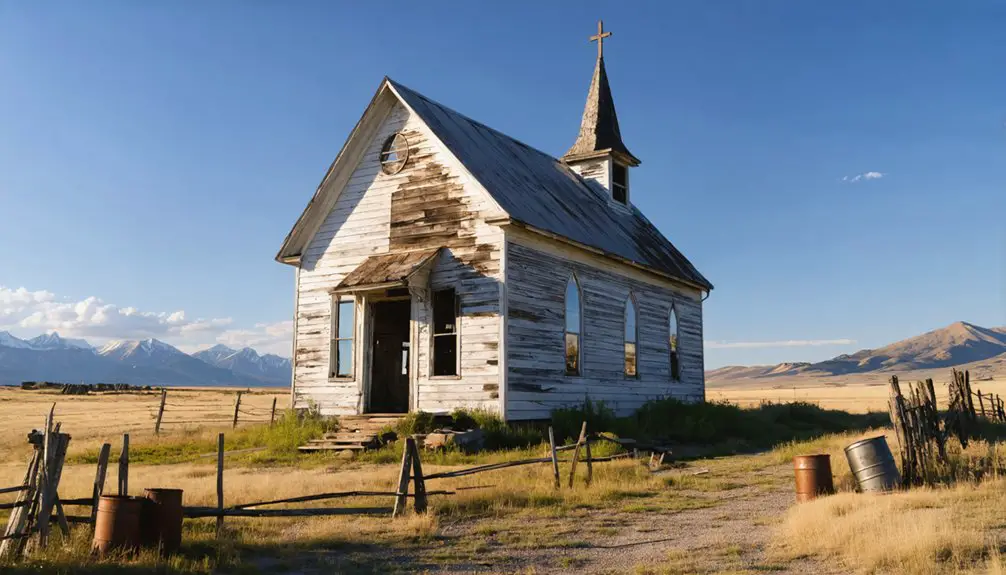
As one of Montana’s most evocative historical treasures, Sixteen joins a remarkable network of ghost towns that paint a vivid picture of the state’s pioneering spirit.
You’ll find it among the countless settlements that rose and fell during the late 19th century’s mining booms, each contributing to Montana’s rich mining heritage. Similar to Garnet’s peak, these towns often housed four hotels and numerous businesses.
Like its counterparts, Sixteen reflects the cultural significance of frontier life through its remaining structures and artifacts. The town’s history mirrors settlements like Kendall, which produced an impressive 350,000 ounces of gold through its mining operations into the 1990s.
Like some ghost towns have become living history museums or state parks, Sixteen stands as a tribute to the authentic boom-and-bust cycles that defined Montana’s territorial growth.
Its preservation helps you understand the complex social dynamics of mining communities, where saloons, schools, and businesses once thrived before economic downturns led to their abandonment.
Frequently Asked Questions
Are There Any Remaining Buildings or Structures Still Standing in Sixteen Today?
While you’d expect this historically significant mining town to be well-preserved, you can’t definitively confirm any remaining structures in Sixteen today, as there’s limited documentation of its surviving buildings.
What Wildlife Can Commonly Be Found Around the Sixteen Mile Creek Area?
You’ll spot abundant wildlife sightings around creek ecosystems, including elk, mule deer, coyotes, black bears, trout, hawks, owls, songbirds, and various native amphibians living near Sixteen Mile Creek.
How Do Visitors Access the Eagle Nest Tunnel Near Sixteen?
Since 1980’s abandonment, you can’t legally access Eagle Nest Tunnel – it’s on private property. You’ll need explicit landowner permission and should expect challenging terrain in Montana’s rugged Belt Mountains.
What Temperatures and Weather Conditions Are Typical in Sixteen Throughout the Year?
You’ll experience seasonal variations from cold winters with lows around 5°F to warm summers reaching 81°F. Climate extremes can range from -14°F to 89°F, with frequent strong winds year-round.
Has Anyone Attempted to Restore or Preserve Artifacts From Sixteen’s Railroad Era?
You’ll find railroad history preservation efforts are limited, with most artifacts deteriorating naturally. The Upper Musselshell Museum houses some items, while volunteer groups occasionally maintain the Eagle Nest Tunnel’s remains.
References
- https://en.wikipedia.org/wiki/Sixteen
- https://thewave.info/MontanaGhostTownsCode/Map.html
- https://kids.kiddle.co/Sixteen
- https://www.youtube.com/watch?v=BQH5LghhkVs
- https://www.plwa.org/sixteen-mile-creek-road
- https://en.wikipedia.org/wiki/Montana_Railroad
- https://mths.mt.gov/education/Textbook/Chapter9/chapter9.pdf
- https://www.trainorders.com/discussion/read.php?11,5147500
- https://www.youtube.com/watch?v=LhR2iTWvo30
- https://www.youtube.com/watch?v=YHbTh5p0Vkk
